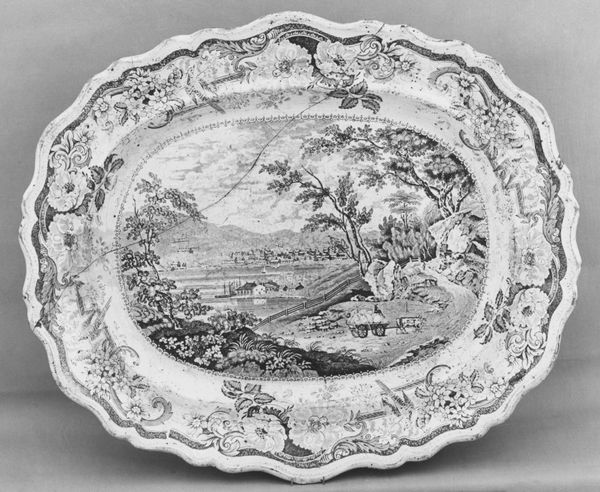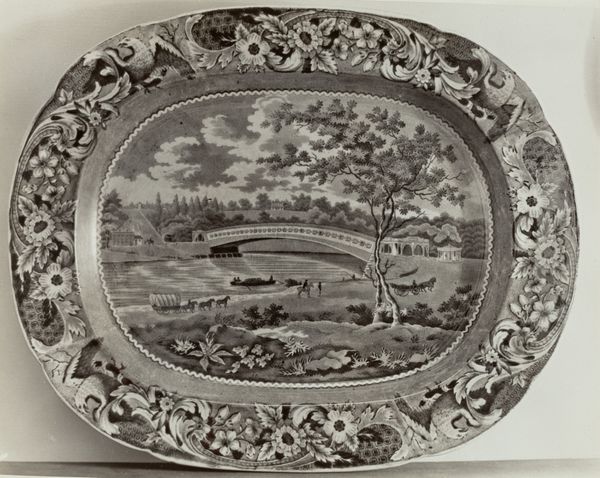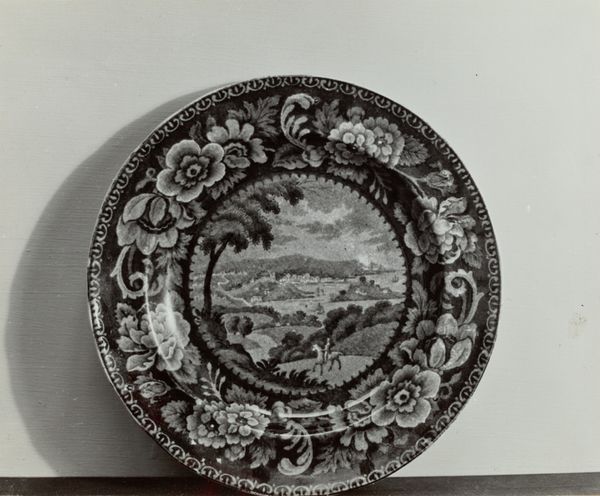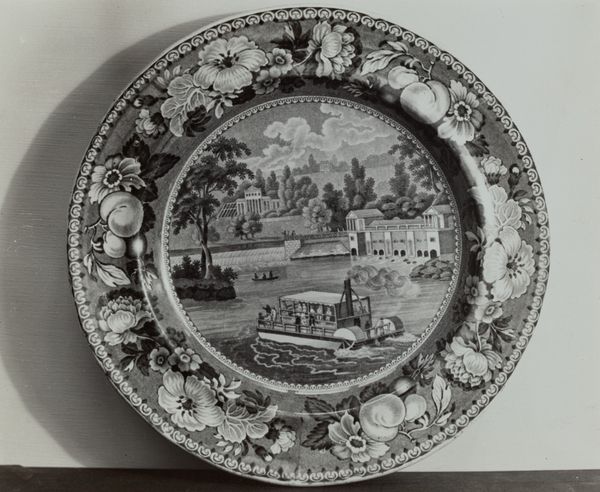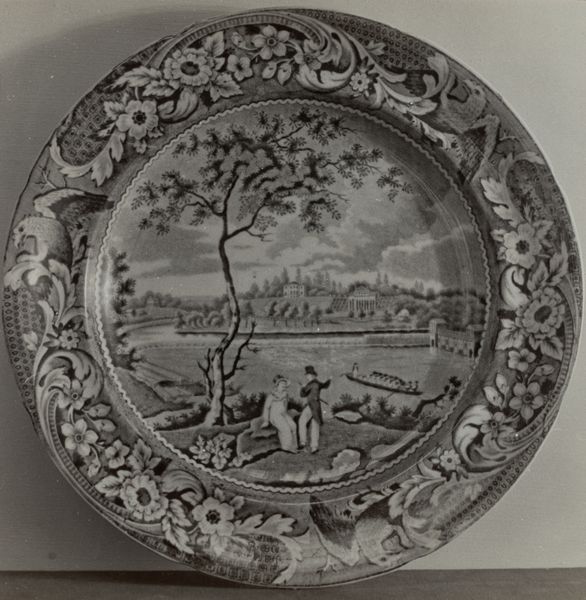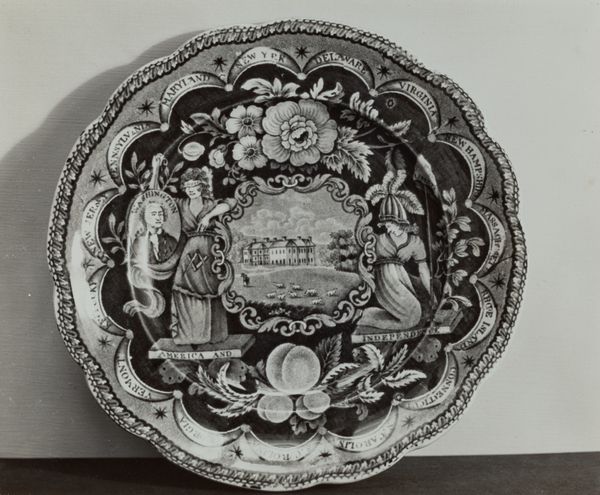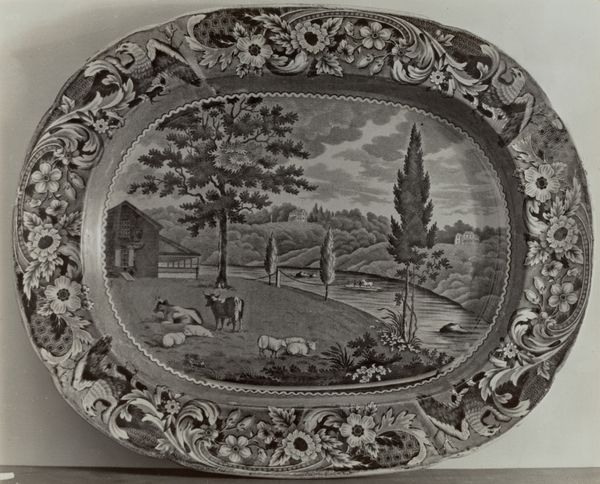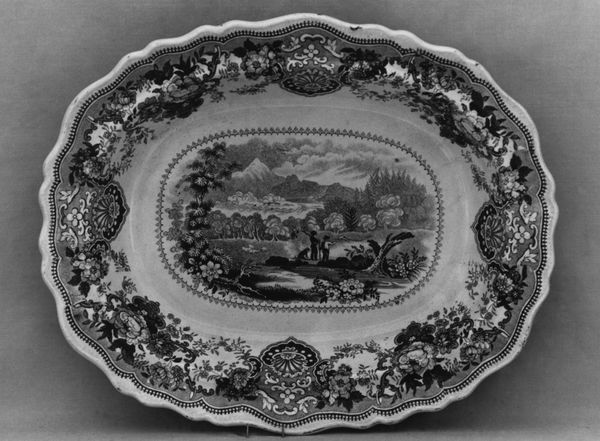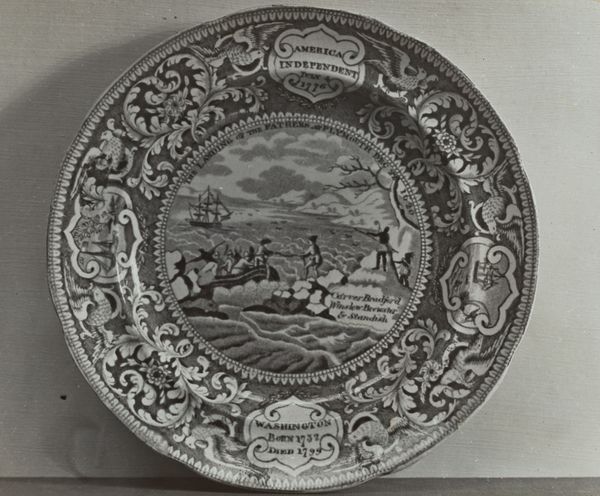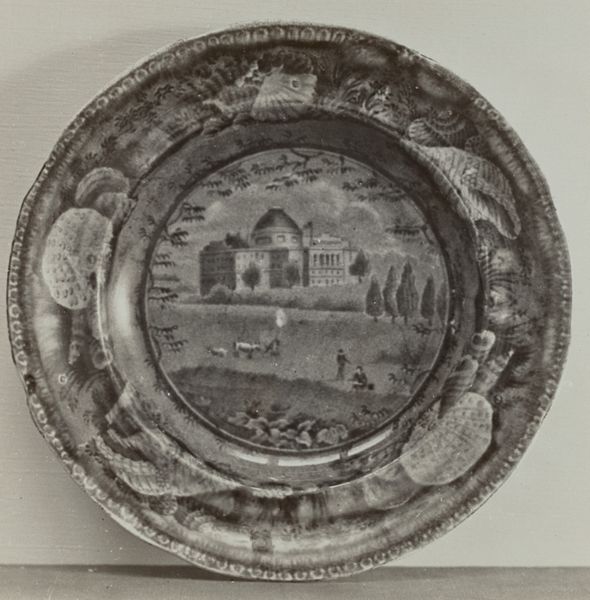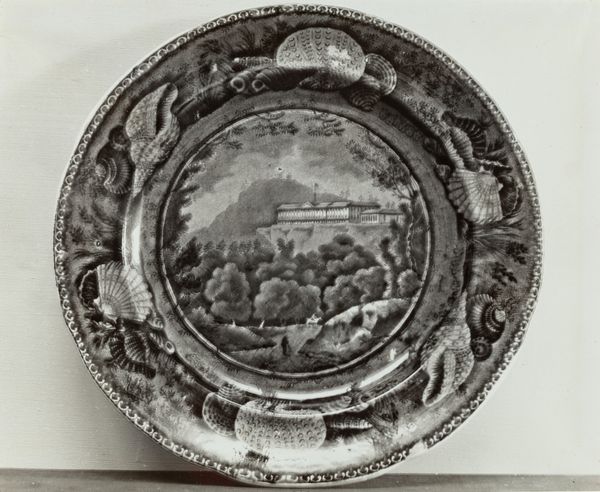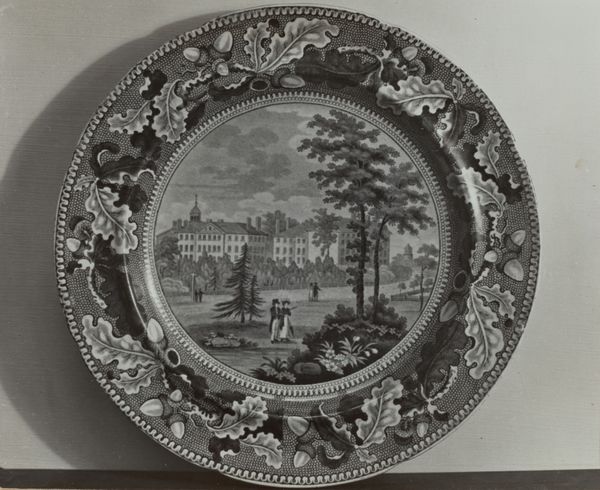
print, ceramic, earthenware
# print
#
landscape
#
ceramic
#
earthenware
#
ceramic
#
earthenware
#
decorative-art
Dimensions: overall: 20.3 x 25.4 cm (8 x 10 in.) Original IAD Object: 17 5/8" long; 14 3/8" wide
Copyright: National Gallery of Art: CC0 1.0
Curator: Well, isn't this a fascinating piece! Here we have an earthenware plate, dating back to around 1936, titled "Newburgh on the Hudson". The plate gives us a landscape view of the city. Editor: Immediately, I'm struck by this sense of faded grandeur. It feels like looking at a memory of a place, rather than the place itself. The black and white, the floral ornamentation all around... It's as if someone wanted to immortalize a very particular idea of home. Curator: Indeed. Plates such as these were very popular decorative items. This design showcases the Hudson River valley, a region ripe with meaning in American art and identity. The central image gives a glimpse into the city, while the outer floral details hint to the landscape. Editor: And those tiny details, almost Victorian in their busyness. Birds hidden amongst the blossoms, small frames within frames. You can almost imagine someone showing off, “Look at all that I can fit onto one little plate!” It’s a beautiful tension between precision and overwhelming detail. I see cultural ambition rendered onto a simple household object. Curator: Exactly. Beyond just a pretty surface, though, there is this cultural ambition you mentioned: Images of idealized landscapes helped people connect with place, particularly as the country underwent massive industrial changes. Owning a piece like this created connection, perhaps, or served as nostalgia for slower times. Editor: I see that perfectly in the ox cart heading away from town. The sky heavy, trees towering, the town nestled far back on the plate. It’s an imagined perspective – no one in the valley at the time likely felt quite so picturesque, given all the societal upheaval. But, you know, that's what these objects gave you - this distance and sense of controlled space that’s comforting and also sort of a lie. Curator: Certainly! The design echoes earlier pictorial traditions and artistic conventions about nature and culture, beauty and nostalgia. The plate creates an accessible symbol of belonging to a wider region, a specific area’s place. Editor: Yes, and perhaps the simple beauty lies in its contradictions: The object itself is humble, yet it aspires to this elevated picturesque landscape. The image is static, while hinting to transition and movement. You know, something very small invites this consideration to larger concepts about home and history...it's pretty clever. Curator: A fascinating dialogue indeed - these kinds of details highlight the way in which landscapes reflect a kind of continuity in our changing emotional connection with them. Editor: Yes! Maybe all we need to really see our history sometimes, are these unassuming portals into it.
Comments
No comments
Be the first to comment and join the conversation on the ultimate creative platform.
